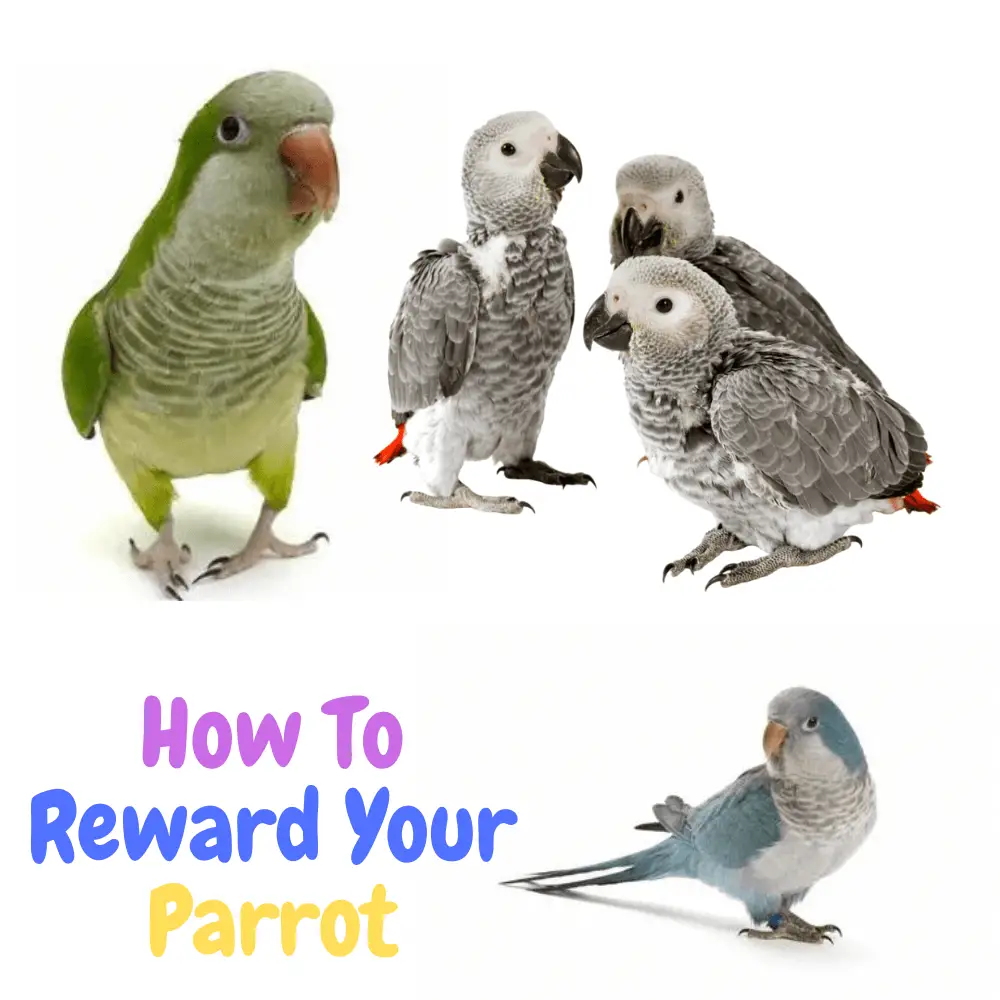
Parrot reward: Anything that is relevant and attractive from the bird’s point of view is a reinforcer
The reward is called “reinforcer”, ie its role is to reinforce/encourage the behavior emitted at the time of its distribution. Food rewards are generally the most effective way to reinforce an attitude = primary reinforcer.
However, many birds, in particular the Gabon Greys, have difficulty accepting food given by hand…
Don’t worry, it is, fortunately, possible to be able to “work” on the behavior of your Gabon Grey, or any other bird. not receptive to food (especially shy individuals that are difficult to approach).
Indeed, there are an infinite number of potential reinforcers!
Even where you don’t necessarily expect them.
Parrots are highly social birds, always looking for interactions (whether with their congeners or with humans). Positive and negative interactions are an integral part of the dynamics of a group of birds.
In addition, a parrot that undergoes a majority of negative interactions with its congeners will be more fulfilled than a parrot that does not undergo any at all!
Among parrots, it is better to be badly accompanied than alone…
Back to our reward stories…
If the parrot is also receptive and requires interactions, then these (whatever their nature) can act as a reinforcer on their own!
(Small parenthesis, it is also for this reason that I often say that it is useless or even harmful to punish or scold your parrot… because any reaction is potentially reinforcing = which encourages the behavior!)
It is possible to be able to change the behavior of your parrot without using food rewards,
or even without having to juggle with its weight or its food ration, whatever the objective of the teaching (even in free flight, no need to talk about weight or restriction with a parrot)!
These other reinforcers are secondary, that is to say naturally less effective than the food which will truly fill a need… Less effective certainly, but they work!
Thus, it is interesting to simply train your bird by working on your own reactions,
(words, intonations, gestures…), depending on those of our parrot.
For example, in learning recall, it is possible to achieve perfect recall without using food, simply by exaggerating our reactions when the response is perfect (our parrot loves that)!
Using our reactions (I am talking in particular about “gratitude” type reactions) to reinforce a behavior is relevant, especially if the parrot likes to interact with humans, with you… of course! With a distant or wary bird, it would be a different story!
Be careful… some of your reactions, even if they are full of good intentions, may not please your bird.
For example:
You call your parrot to the rappel, it comes right up and you reward it verbally by hugging it to you for a hug, or simply running your hand over its back for a caress.
In all honesty, apart from cockatoos (and again) or certain individuals, I have rarely seen parrots really appreciate this type of typically mammalian “hug”!
The simple verbal reaction (gratitude power 12) could have sufficed simply. While your hug (once again with good intentions) will on the contrary have the effect of dissuading your parrot from answering you the next time you call him… too bad!
It is often because of inappropriate or out-of-sync reactions that the parrot takes longer to learn a task, or even fails to learn it at all.
Ideally, a good relationship with a parrot is based solely on actions that reinforce good behavior
or by total ignorance of “undesirable” behavior or that one simply does not wish to encourage.
To sum up: to reward your parrot is to bring him something that is likely to interest him.
And finally, it doesn’t take much… to be happy! Or maybe just…a little observational effort on our part!




















